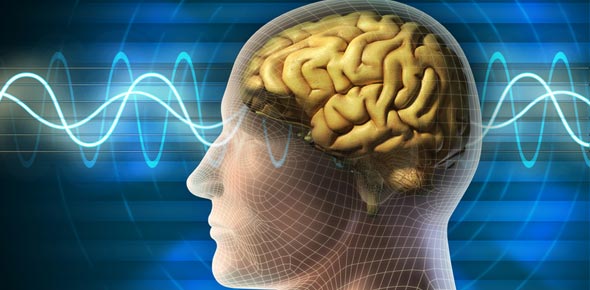EEG

Egg quiz
- 1.
Which is not a variable that needs to be considered in evaluting the EEG
- A.
Patient gender
- B.
Patient age
- C.
Patient level of alertness
- D.
Patient level of consciousness
Correct Answer
A. Patient gender -
- 2.
Major EEg changes in activity occur against the _____
- A.
Chart speed
- B.
Background
- C.
Filter settings
- D.
None of the above
Correct Answer
B. Background -
- 3.
Refers to thereaction of the EEG to stimulation or a stimulusor a related change in morphology
- A.
Voltage
- B.
Reactivity
Correct Answer
B. Reactivity -
- 4.
Refers to the shape of the waves
- A.
Frequency
- B.
Voltage
- C.
Reactivity
- D.
Morphology
Correct Answer
D. Morphology -
- 5.
EED amplitude should be referred to in term of ____
- A.
Frequency
- B.
Voltage
- C.
Reactivity
- D.
Morphology
Correct Answer
B. Voltage -
- 6.
Refers to rhythmic repetitive EEG activity
- A.
Morphology
- B.
Reactivity
- C.
Frequency
- D.
Voltage
Correct Answer
C. Frequency -
- 7.
Rhythmic, arrythmic, and dynrhythmic are terms that refer to
- A.
Voltage
- B.
Frequency
- C.
Morphology
- D.
Reactivity
Correct Answer
B. Frequency -
- 8.
Activity that emerages from the background with rapid onset and abrupt ending
- A.
Attenuation
- B.
Polarity
- C.
Hypersynchrony
- D.
Paroxysmal
Correct Answer
D. Paroxysmal -
- 9.
Reduction in amplitude of EEG activity resulting from decreased voltage
- A.
Attenuation
- B.
Polarity
- C.
Hypersynchrony
- D.
Paroxysmal
Correct Answer
A. Attenuation -
- 10.
An increase in voltage and regularity of rhythmic activity
- A.
Hypersynchrony
- B.
Polarity
- C.
Attenuation
- D.
Paroxysmal
Correct Answer
A. Hypersynchrony -
- 11.
The negative of positive of a waveform
- A.
Attenuation
- B.
Hypersynchrony
- C.
Paroxysmal
- D.
Polarity
Correct Answer
C. Paroxysmal -
- 12.
A sequence of two or more waves, not necessarily of the same frequency, with distinct form or pattern different from background activity?
- A.
Sinusoidal
- B.
Triphasic
- C.
Complex
- D.
Transient
Correct Answer
C. Complex -
- 13.
Having characteristics similiar to sine waves
- A.
Triphasic
- B.
Complex
- C.
Sinusoidal
- D.
Transient
Correct Answer
C. Sinusoidal -
- 14.
A waveform with three distinct components
- A.
Sinusoidal
- B.
Transient
- C.
Triphasic
- D.
Complex
Correct Answer
C. Triphasic -
- 15.
An isolated wave or patteren that is distinctly different from background activity
- A.
Transient
- B.
Complex
- C.
Sinusoidal
- D.
Triphasic
Correct Answer
B. Complex -
- 16.
Occipital _____ tends to be slightly asymmetrical
- A.
Beta
- B.
Theta
- C.
Delta
- D.
Alpha
Correct Answer
D. Alpha -
- 17.
Occur in the occipital area when the subject intently scans a complex visual field with horizontal eye movement
- A.
Mu
- B.
Lambda
- C.
POST
- D.
K-complex
Correct Answer
B. Lambda -
- 18.
A series of surface positive transient
- A.
Mu
- B.
Lambda
- C.
POST
- D.
K-complex
Correct Answer
C. POST -
- 19.
Seen distinctly in the central areas. it has a unique reactivity and is blocked by movement
- A.
Lambda
- B.
POST
- C.
K-complex
- D.
Mu
Correct Answer
D. Mu -
- 20.
Sharp, slow waves with associated spindles bursts. midline and predominately central in orgign
- A.
Mu
- B.
K-complex
- C.
Lambda
- D.
POST
Correct Answer
B. K-complex -
- 21.
Consideration of ______ more imporatnt in children than in adults
- A.
Head size
- B.
Level of alertness
- C.
Age
- D.
Hours of sleep
Correct Answer
C. Age -
- 22.
Newborns spend this amount of time in REM sleep
- A.
25%
- B.
50%
- C.
75%
- D.
100%
Correct Answer
B. 50% -
- 23.
K-complexes first appear at approimately what age
- A.
7 months
- B.
1 months
- C.
1 year
- D.
4 months
Correct Answer
A. 7 months -
- 24.
Pattern that is normal in young childhood sleep but can be mistaken for an abnormality
- A.
Spike wave
- B.
K-complex
- C.
Sleep spindle
- D.
Hypnogogic hypersynchrony
Correct Answer
D. Hypnogogic hypersynchrony -
- 25.
Which one do you like?
- A.
Option 1
- B.
Option 2
- C.
Option 3
- D.
Option 4
Correct Answer
A. Option 1 -
Quiz Review Timeline +
Our quizzes are rigorously reviewed, monitored and continuously updated by our expert board to maintain accuracy, relevance, and timeliness.
-
Current Version
-
Jul 01, 2014Quiz Edited by
ProProfs Editorial Team -
Oct 17, 2012Quiz Created by
Zkeisha85
- Computed Tomography Quizzes
- Mammography Quizzes
- Medical Coding Quizzes
- Medical Science Quizzes
- Medical Term Quizzes
- Medical Terminology Quizzes
- Medical Training Quizzes
- Medical Vocabulary Quizzes
- MRI Quizzes
- Nuclear Medicine Quizzes
- Obstetrics And Gynecology Quizzes
- Pathology Quizzes
- Pathophysiology Quizzes
- Phlebotomy Quizzes
- Pulmonary Quizzes
- Radiography Quizzes
- Radiology Quizzes
- Syndrome Quizzes
- Ultrasound Quizzes
- Vital Signs Quizzes
- Xray Quizzes
 Back to top
Back to top


